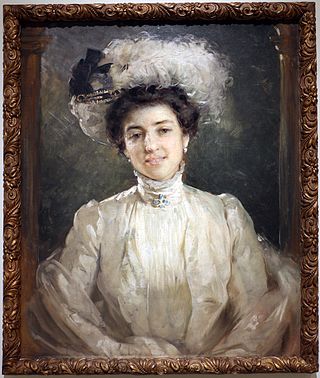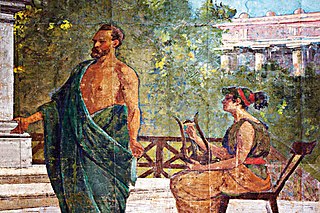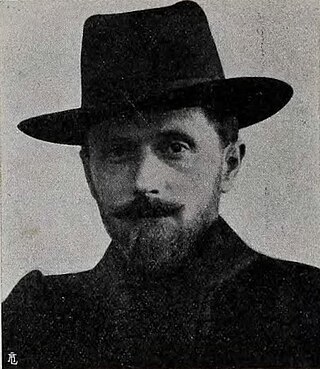
Enrico Salfi was an Italian painter, mainly of biblical or Ancient Roman (Pompeian) subjects. He also excelled in oil portraits.

Francesco Raffaello Santoro was an Italian painter. He was known for his work in landscapes and genre themes, both in oils and watercolors.
Edoardo Lionetti was an Italian sculptor.
Vincenzo Severino (1859-1926) was an Italian painter, active mainly in Naples and Rome.
Salvatore Postiglione was an Italian painter, mainly of portraits, and historic and genre subjects, in a Realist style.

Francesco Saverio Netti was an Italian painter.
Elviro Raimondi was an Italian painter.
Domenico Pesenti was an Italian painter and antiquarian. He painted mainly vedute.

Edgardo Saporetti was an Italian painter of eclectic subjects, including portraits, landscapes, and genre subjects.

Luigi Serra was an Italian painter, known for his watercolors.

Camillo Miola, also known as Biacca, was an Italian painter, often painting exotic Neo-Pompeian and Orientalist subjects. He also painted history and portraits.

Raimondo or Ramón Tusquets y Maignon was an Italian-Spanish painter, known for his eclectic subjects, ranging from orientalist themes, historical compositions to genre scenes of the countryside in Campania.
Antonio Licata was an Italian painter, mainly of sacred subjects and portraits.

Alberto Pisa was an Italian painter, often painting ruins, landscapes, and garden views in bright watercolor.

Gustavo Mancinelli was an Italian painter, who made portraits and depicted many Orientalist subjects.
Girolamo Nattino (1842–1913) was an Italian painter, who depicted eclectic subjects, including genre, landscapes, and portraits.
Francesco Autoriello was an Italian painter, mainly depicting historical canvases.

Luigi or Louis Rubio was an Italian painter, active in both Neoclassicism but later Romantic styles, painting mainly historic-mythologic canvases, as well as some genre subjects, and portraits. His works harked back to the Troubadour style twenty years earlier.

Lionello Balestrieri was an Italian painter and engraver, active in various styles mainly in Paris and Naples.
Louis Buisseret was a Belgian painter, draftsman and engraver. His style of art mainly focused on realistic portraits, nudes, and still life. Works by Buisseret can be found in museums in Belgium, Barcelona, Madrid, Riga, and Indianapolis.











